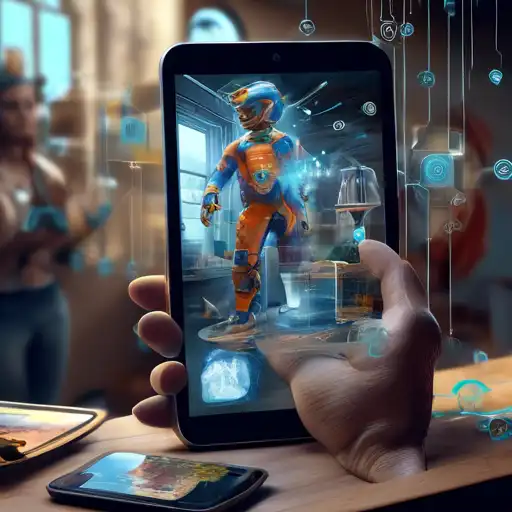The Future of Interaction: How Augmented Reality Merges the Digital and Physical Worlds
Augmented Reality (AR) is transforming the way we interact with the world around us. By overlaying digital information onto the physical environment, AR creates a blended experience that enhances our perception of reality. This technology is not just a futuristic concept; it's already being integrated into various industries, from retail to education, and is changing the way we live, work, and play.
Understanding Augmented Reality
At its core, Augmented Reality is about enhancing the real world with digital elements. Unlike Virtual Reality (VR), which creates a completely artificial environment, AR uses the existing environment and overlays new information on top of it. This can be anything from simple text notifications to complex 3D models. The technology relies on devices such as smartphones, tablets, and AR glasses to deliver these immersive experiences.
Applications of Augmented Reality
AR has a wide range of applications across different sectors. In retail, for example, customers can use AR to visualize how furniture would look in their home before making a purchase. In education, AR can bring historical events to life or help students visualize complex scientific concepts. The healthcare industry is also benefiting from AR, with surgeons using it to plan and perform procedures with greater precision.
- Retail: Try before you buy with AR fitting rooms and virtual showrooms.
- Education: Interactive learning experiences that make education more engaging.
- Healthcare: Enhanced surgical planning and patient education.
- Entertainment: Immersive games and experiences that blur the line between the digital and physical worlds.
The Technology Behind AR
Augmented Reality technology combines hardware and software to create its magic. On the hardware side, devices need cameras to capture the real world and displays to overlay digital content. Software plays a crucial role in processing the real-world data and generating the digital overlay. Advances in machine learning and computer vision are making AR more accurate and responsive, opening up new possibilities for its use.
Challenges and Future Directions
Despite its potential, AR faces several challenges. Technical limitations, such as the need for more powerful processors and better battery life, are ongoing issues. There are also concerns about privacy and the ethical implications of blending digital and physical realities. However, as technology advances, these challenges are being addressed, paving the way for more widespread adoption of AR.
The future of Augmented Reality is bright, with endless possibilities for innovation. As AR technology becomes more sophisticated and accessible, we can expect to see it become an integral part of our daily lives, transforming how we interact with the world around us.
For more insights into the latest tech trends, check out our articles on Digital Innovation and Tech Trends.
